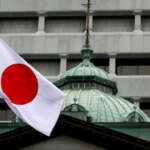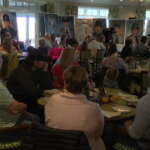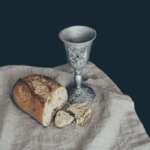About Good Friday Holiday
Good Friday is one of the most solemn days of the Christian calendar, observed around the world during Holy Week to commemorate the crucifixion of Jesus Christ. Though its core religious meaning—mourning, reflection and prayer—remains constant, the ways people mark the holiday vary widely: quiet church services and fasting in many Western countries; dramatic Passion plays and candlelit processions in Spain and Latin America; barefoot penitential marches in the Philippines; and public liturgies along the Via Dolorosa in Jerusalem. These diverse observances make Good Friday a potent mix of spirituality, cultural identity and living tradition, offering travelers a rare window into local faith and communal memory.
For the culturally curious traveler, Good Friday can be a deeply moving time to visit, but it also requires sensitivity and planning. Popular destinations like Seville, Antigua Guatemala, and Jerusalem draw large crowds and may impose closures or modified transport schedules, while some countries observe public holidays that affect shops and services. When witnessing processions or rituals, respect local customs—dress modestly, ask before photographing, and follow guidance from organizers. Whether you seek contemplative worship or vibrant street theatre, Good Friday reveals how global Christianity is expressed through ritual, pageantry and private devotion.
Good Friday: A Deep Dive into Meaning, Tradition, and Modern Observance
Good Friday sits at the heart of Holy Week with a mix of solemnity, ritual, and cultural expression that spans the globe. Whether you grew up attending services or are simply curious about why many businesses close and processions snake through city streets, this guide breaks down the holiday’s history, symbolism, foods, and modern relevance—all in plain language. Ready to walk through the story behind the day, like tracing footprints along an ancient road? Let’s go.
Key Takeaways
- Good Friday commemorates the crucifixion and death of Jesus Christ and is observed during Holy Week on the Friday before Easter Sunday.
- It is marked by solemn liturgies, processions, fasting, and sometimes dramatic Passion plays; customs vary widely by region and denomination.
- Symbols include the cross, nails, the crown of thorns, and black or purple vestments; many communities use restrained decorations or none at all.
- While deeply religious, Good Friday has social, cultural, economic, and environmental consequences, affecting business hours, travel, and tourism.
- Understanding Good Friday offers insight into broader Christian traditions and regional cultures, making it relevant even to non-Christians as a window into faith, history, and communal memory.
History and Origin
Early Beginnings
Good Friday’s roots trace back to the first-century followers of Jesus in Jerusalem. After Jesus’ arrest, trial, and crucifixion, his death became the focal point for early Christians who gathered weekly to remember the Passion—the suffering and death of Christ. Over time, this remembrance developed into an annual observance during the week leading up to Easter, known as Holy Week.
By the 2nd and 3rd centuries, documented practices like fasting, prayer, and specific liturgies around the Passion started to appear. As Christianity spread, local customs were layered on top of the core remembrance—some communities developed dramatic readings of the Gospel account, while others emphasized periods of silence and fasting.
Historical Context
Throughout the Middle Ages, Good Friday became institutionalized in the liturgical calendar. The Roman Catholic Church, Eastern Orthodox Churches, and many Protestant denominations codified particular services—like the Veneration of the Cross, the reading of the Passion according to one of the Gospels, and the Stations of the Cross. These rituals offered believers a narrative and physical way to participate in the story of Jesus’ sacrifice.
Political and cultural changes shaped observance too. In some European societies, secular authorities reinforced the day’s solemnity with closures of markets and courts. In colonial contexts, missionaries blended Good Friday customs with local traditions, producing diverse regional expressions that remain visible today.
Significance and Meaning
Religious Significance
At its core, Good Friday commemorates what Christians believe is the central act of salvation—the crucifixion of Jesus. For many, it’s not just an event from the past but a living theological hinge: the point where suffering, justice, and divine love converge. The day invites reflection on sacrifice, forgiveness, and the human capacity for both cruelty and compassion.
Many Christians interpret the crucifixion as an atoning sacrifice—Jesus accepts suffering on behalf of humanity. Others emphasize the ethical or existential dimensions: a powerful story about standing with the oppressed and confronting injustice. These different theological emphases coexist within the broad umbrella of Christian tradition.
Cultural Significance
Beyond theology, Good Friday functions as a cultural anchor for communities. It’s a day when family calendars pause, and neighborhoods gather. Whether in solemn processions in Spain, quiet church services in the United States, or elaborate passion plays in the Philippines, Good Friday shapes social rhythms and collective memory.
For many people, even those who aren’t religious, Good Friday is a marker of the changing season—spring in the Northern Hemisphere, an annual time to slow down, reflect, and connect with family and history.
Symbols and Decorations
Symbols on Good Friday are spare but potent. The cross is the primary icon—it represents both the method of execution and theologically rich concepts like sacrifice and redemption. In many churches, the crucifix (a cross bearing the figure of Christ) is veiled or placed prominently for veneration.
Other common symbols include the crown of thorns, nails, and the inscription “INRI” (Iesus Nazarenus, Rex Iudaeorum—Jesus of Nazareth, King of the Jews). These items are sometimes displayed in processions or used in visual art to evoke the narrative of the Passion. The color black or deep purple often dominates vestments and altar cloths, signaling mourning and penitence.
Decoration is usually minimal. Where Easter is bright and florid, Good Friday favors restraint—many churches remove flowers and dim lights, creating a stark atmosphere that encourages contemplation. Think of it as the visual equivalent of a pause in music: silence that amplifies meaning.
In some cultures, symbolic acts—like covering statues or ringing no bells—add another layer of sensory silence, helping worshippers feel the weight of the day.
Traditions and Celebrations
Traditions on Good Friday vary widely, but a few threads unite them: solemnity, remembrance, and community participation. In Roman Catholic and many Protestant contexts, the Stations of the Cross—a devotional walk through 14 scenes of Jesus’ journey to the cross—is central. People move from station to station, praying and reflecting, often accompanied by scripture readings.
In Eastern Orthodox churches, the service is similarly solemn but different in structure, often including the reading of the Passion and an evening lamentation known as the Epitaphios procession. Church interiors are sometimes stripped of icons or covered with black cloth, and a bier representing Christ’s tomb may be carried out in a dramatic ritual.
In predominantly Catholic countries like Spain and parts of Latin America, processions dominate. Brotherhoods (hermandades) carry heavy wooden floats depicting scenes from the Passion through streets lined with onlookers. These processions are theatrical, emotional, and deeply local—each town or city has its own style and traditions.
The Philippines offers one of the most dramatic public expressions: penitent rituals can range from quiet processions to reenactments of the crucifixion. While the most extreme practices are controversial and not representative of mainstream Philippine Catholicism, they reflect a long history of embodied faith and public ritual.
Across denominations, Good Friday services often include readings of the Passion narrative, prayers, silence, and moments for personal confession and reflection. Many churches also maintain strict fasting and abstinence rules, underscoring the day’s seriousness.
Food and Cuisine
Food traditions on Good Friday emphasize simplicity and abstinence. Many Christian denominations encourage fasting and refrain from eating meat—a practice rooted in medieval rules that associate the flesh with celebration, which is inappropriate for a day of mourning. Fish dishes therefore become common, and culinary creativity arises from this constraint.
In Mediterranean countries, expect dishes like grilled fish, seafood stews, or simple pasta with anchovy-based sauces. In parts of the UK and Ireland, hot cross buns—spiced, slightly sweet buns marked with a cross—are traditionally eaten on Good Friday or during Holy Week. In Latin America, dishes that avoid red meat, such as rice and beans or fish-based stews, are typical. Food becomes part of the ritual: humble, shared, and reflective.
Attire and Costumes
On Good Friday, clothing tends toward somber and modest. For worshippers attending services, dark colors—black, gray, or deep purple—are common, reflecting themes of mourning and penitence. Clergy wear specific vestments: in many Western churches, priests and ministers don black or purple chasubles or stoles; in the Orthodox tradition, liturgical colors and vestments vary but remain subdued.
Some cultures have distinctive attire linked to processions. In Spain, penitents called nazarenos wear hooded robes bearing a cone-shaped cowl (capirote) that covers the face—a dramatic costume dating back centuries, symbolizing penitence and anonymity before God. These robes vary in color and design depending on the religious brotherhood.
In the Philippines, participants in passion plays may wear period costumes to portray Roman soldiers, apostles, or Jesus himself. In these settings, costumes are theatrical and intentionally evocative, designed to transport viewers back to the biblical world. However, such reenactments are generally performed under church oversight to preserve religious dignity.
Across the board, attire communicates a mood: not celebration, but reflection. Dressing simply becomes another form of participation—an outward sign of inward focus.
Geographical Spread
Good Friday is observed globally, but how it’s celebrated depends on local history, dominant Christian tradition, and cultural context. Here are a few regional snapshots and a quick table to map customs.
| Region | Notable Customs |
|---|---|
| Spain | Elaborate processions, nazarenos, pasos (floats), brotherhoods |
| Philippines | Passion plays, penitential acts, public processions |
| Latin America | Processions, street theater, fish-based meals |
| United States & Canada | Church services, reflective worship, community gatherings |
| Eastern Europe & Greece | Epitaphios processions, liturgical hymns, midnight vigils |
In Europe—especially in Catholic strongholds like Spain and parts of Italy—Good Friday is public, often a civic occasion with retailers and offices closing. In predominantly Protestant regions like Northern Europe, the day may be observed with quieter services or left to personal observance.
In Latin America, processions and public rituals blend Indigenous practices and Spanish colonial Catholicism—colorful, communal, and emotionally intense. In Orthodox countries, such as Greece, the focus is more liturgical with particular hymns and a funeral-like procession that mirrors ancient rites.
In sub-Saharan Africa, Good Friday services often blend local musical traditions with Christian liturgy—resulting in joyful yet solemn worship that emphasizes community healing and spiritual reflection.
Finally, in secular countries Good Friday might be a bank holiday, a day off for businesses and schools, even for those who don’t observe it religiously. Its public status makes it as much a cultural marker as a religious one.
Modern-Day Observations
How is Good Friday adapting to our modern world? First, digital and livestreamed services have become common. During the COVID-19 pandemic, churches pivoted online, and many congregations kept the tradition of solemn Good Friday services through livestreams and pre-recorded liturgies. This digital shift widened access, letting people join services across time zones.
At the same time, some traditional practices are being reevaluated. Extreme acts of penance—like self-flagellation or real-life crucifixion reenactments—have sparked debate within church communities about safety, dignity, and theological fidelity. Many bishops and religious leaders discourage dangerous practices while encouraging symbolic forms of devotion.
Commercialization is another modern factor. While Good Friday hasn’t been commercialized to the same degree as Christmas, seasonal tourism—especially to Holy Week processions in Spain or dramatic reenactments in the Philippines—has economic and cultural ripple effects. Cities balance heritage tourism with preserving religious meaning, often limiting commercial encroachment on sacred rituals.
Finally, interfaith and secular interpretations of Good Friday continue to emerge. For some non-Christians, the day offers a chance to engage with themes of sacrifice and social justice, or to participate in community acts of service and remembrance.
Interesting Facts or Trivia
Did you know the term “Good” in Good Friday may come from an older meaning of “good” as “holy” or “pious”? Some scholars argue the original phrase was “God’s Friday.” Language is a living fossil—clues of older meanings survive in surprising places.
Hot cross buns, now widely associated with Easter, have a history tied to Good Friday. In England, bakers baked specially marked buns for the day as early as the 12th century. They served both as food and as a kind of blessing for households.
Not all Christian traditions treat Good Friday the same. For example, many Protestants avoid Eucharist services on Good Friday, while Catholics often celebrate the Liturgy of the Passion, which includes Communion. This variation underscores theological diversity within Christianity.
Also, Good Friday is a public holiday in many countries but not all. The status of the day reflects historical religious majorities and secular attitudes. In the United States, for instance, Good Friday is a state holiday in some states but not federally recognized.
Legends and Myths
Good Friday, like many ancient observances, has accumulated folklore. One legend says black cats were unlucky on Good Friday because they were associated with the crucifixion’s darkness; such beliefs fed local superstitions around the day. Folklore often merges with liturgy in ways that make the holiday culturally rich and sometimes confusing.
Another set of myths surrounds the weather on Good Friday. In agricultural societies, weather on this day was read as an omen for the coming season: a sunny Good Friday might be taken as a sign of a bountiful harvest, while a stormy one could signal hardship. These meanings were more poetic than prophetic, but they show how humans look for patterns in ritual moments.
Passion plays themselves generated legendary tales. The most famous medieval Passion play, in Oberammergau, Germany, began as a vowed promise by villagers during a plague in the 17th century. The play continues as a local institution—part drama, part legend infused with communal memory.
Finally, myths about relics—physical objects connected to Jesus’ Passion, like the True Cross—have a long history. Claims of relics of the True Cross circulated in medieval Europe and shaped pilgrimage patterns. While scholarly consensus questions many such relics’ authenticity, their cultural impact is undeniable.
Social and Economic Impact
Good Friday affects economies and communities in practical ways. In countries where it’s a public holiday, retail and financial markets may close, altering business patterns. Schools often give students time off, which can increase short-distance leisure travel as families use the long weekend to visit relatives or attend religious sites.
Tourism spikes in places with famous processions or Passion plays. Cities like Seville, Spain, see thousands of visitors during Holy Week, which supports hotels, restaurants, and local artisans. That economic boost, however, requires careful management to preserve religious integrity and prevent cultural commodification.
For small businesses, Good Friday can be a mixed blessing. Retailers selling food, flowers, or religious items often see higher sales, while those operating on the assumption of a normal weekday might face limited customer traffic. Public transportation and essential services often run on reduced schedules, impacting workers who do not observe the holiday and rely on daily wages.
Charitable and community organizations sometimes use Good Friday as a time for service—soup kitchens, outreach programs, and interfaith events capitalize on the reflective mood to mobilize volunteers. So economically, the day is not just about losses from closures; it’s also a time for community investment and social solidarity.
Environmental Aspect
Good Friday’s environmental footprint is generally small relative to other holidays, but modern observances, particularly processions and tourism, carry impacts—waste from visitors, increased transport emissions, and energy use for lighting and services. Many churches and community groups now emphasize eco-friendly practices: reusable decorations, careful waste management, and encouraging public transit during large processions.
Some faith-based environmental initiatives also tie into the season of reflection—encouraging congregations to engage in creation care or community clean-ups that align spiritual introspection with stewardship of the Earth.
Global Relevance
Even if you’re not Christian, Good Friday offers value as cultural literacy. It’s a key to understanding Western calendars, public holidays, and civic life in many countries. For students of art, literature, and music, the themes of the Passion resonate through centuries of creative work. For travelers, observing local Good Friday customs is a way to experience community life at a deep level.
In an interconnected world, religious observances influence geopolitics, commerce, and social rhythms. Businesses operating internationally need to understand Good Friday to plan staffing, logistics, and customer expectations. That practical relevance makes the day more than a religious curiosity—it’s part of global cultural fluency.
Other Popular Holiday Info
If you’re planning to visit a Good Friday event, a few practical tips help. Arrive early—processions and services can fill up quickly. Dress respectfully (dark, modest clothing is usually appropriate), and be prepared for silence in public spaces. Photography rules vary: some churches welcome photos, others prohibit them during solemn moments, so ask politely.
Many pilgrimage sites offer guided tours or multilingual materials, which can deepen your understanding. If you’re traveling internationally, check local public holiday schedules—transportation, hospitality, and museum hours may change.
Finally, if local customs involve reenactments or penance, be mindful of ethical sensitivities. Spectator curiosity should not turn serious religious observances into a spectacle; watch with respect and ask local guides for guidance.
Conclusion
Good Friday is a study in contrasts: silence and sound, mourning and hope, ancient ritual and contemporary adaptation. Whether you approach it as a believer, a curious traveler, or a cultural observer, the day offers a concentrated lesson on how communities remember, grieve, and seek meaning. Want to experience it yourself? Visit a local service, respect the customs, and let the quiet of the day invite reflection. Interested in learning more? Explore authoritative resources like the Vatican’s liturgical explanations, BBC religious coverage, or the Encyclopaedia Britannica for deeper background:
- Vatican — Official liturgical resources
- Encyclopaedia Britannica — Good Friday overview
- BBC — Good Friday explanation and customs
So next time you see a closed shop or a quiet street on the Friday before Easter, you’ll know there’s a story behind the hush—a story stretching back millennia and played out anew each year. Why not take a moment to listen?
How to Say "Good Friday" In Different Languages?
- Arabic
- الجمعة العظيمة (ar-EG)
- Chinese (Simplified)
- 耶稣受难日 (zh-CN)
- French
- Vendredi saint (fr-FR)
- German
- Karfreitag (de-DE)
- Greek
- Μεγάλη Παρασκευή (el-GR)
- Hindi
- पवित्र शुक्रवार (hi-IN)
- Indonesian
- Jumat Agung (id-ID)
- Italian
- Venerdì Santo (it-IT)
- Japanese
- 受難日 (ja-JP)
- Polish
- Wielki Piątek (pl-PL)
- Portuguese
- Sexta-feira Santa (pt-BR)
- Russian
- Страстная пятница (ru-RU)
- Spanish
- Viernes Santo (es-ES)
- Swahili
- Ijumaa Kuu (sw-TZ)
- Turkish
- Kutsal Cuma (tr-TR)
Good Friday Also Called
Holy Friday (Great Friday)Countries where "Good Friday" is celebrated:
- :: Africa
- :: Nigeria
- :: Asia
- :: Philippines
- :: Singapore
- :: Europe
- :: Denmark
- :: Germany
- :: Ireland
- :: Norway
- :: Spain
- :: United Kingdom
- :: North America
- :: Canada
- :: United States of America
- :: Oceania
- :: Australia
- :: New Zealand
- :: South America
- :: Brazil
- :: Colombia
HOLIDAY CHECK: We strive for accuracy and fairness. But if you see something that doesn't look right, please click here to contact us!
Travel Recipes, Food and Cuisine
Good Friday Food, Cuisine, and Recipes: Traditions, Regional Dishes, and Modern Twists
Good Friday sits at the crossroad of faith, memory, and table rituals. For many Christian communities, the day’s culinary customs grow from penitence and the Lenten practice of abstaining from meat, creating a rich repertoire of fish-based plates, simple breads, and symbolic sweets. This guide explores the signature dishes tied to Good Friday, regional variations, tested recipes, contemporary reinventions, pairing ideas, presentation tips, and sensible dietary swaps—so you can honor the day at the table with both authenticity and flair.
Food and Cuisine - Good Friday
Signature Dishes
Across cultures, Good Friday cuisine emphasizes restraint and reflection. Common threads include:
- Fish and seafood: fresh, fried, baked, or salted (e.g., cod/baccalà) as a primary protein in lieu of meat.
- Simple breads and buns: sweet spiced rolls like hot cross buns that carry symbolic crosses.
- Hearty legumes and vegetable stews: filling, modest dishes consistent with fasting practices.
- Preserved fish preparations: salted cod (bacalao) and other shelf-stable fish appear where refrigeration and historic customs favored preservation.
These foods are as much about theological symbolism as they are about seasonal availability and historical trade in salted fish.
Regional Variations
Good Friday menus diverge notably by geography and denomination:
- United Kingdom & Ireland: Hot cross buns, fish and chips, and simple grilled fish are common. Hot cross buns are historically linked to Good Friday rituals. (See BBC Good Food for cultural notes.)
- Southern United States: Fish fries—beer-battered or cornmeal-coated catfish or cod—served with hush puppies and coleslaw.
- Spain & Latin America: Bacalao guisado (salt cod stews), pilaf-style rice with seafood, or simple grilled sardines in coastal regions.
- Italy: Baccalà preparations (e.g., alla Vicentina, fritters) and other seafood-centric plates; in the north, polenta often accompanies fish.
- Philippines: Sinangag (garlic rice) and fish stews or grilled fish; many families observe strict abstinence from meat.
- Caribbean: Saltfish and ackee (Jamaica), saltfish and provision, and fritters—often enlivened by local spices and scotch bonnet heat.
- Eastern Orthodox traditions: A stricter fast may lead to entirely vegan Lenten fare—dolmades, lentil soups, and dishes free of olive oil and dairy on certain days.
Recipes
Classic Holiday Recipe 1: British Hot Cross Buns
Hot cross buns are aromatic sweet rolls marked with a cross—traditionally eaten on Good Friday. This is a classic version with spices and currants.
Serves: 12 | Hands-on: 30 minutes | Total time: 2–2.5 hours (includes rising)
Ingredients
- 500 g (4 cups) strong white flour
- 75 g (1/3 cup) caster sugar
- 10 g (2 tsp) active dry yeast
- 1 tsp salt
- 2 tsp mixed spice (or cinnamon + nutmeg)
- 50 g (3.5 tbsp) unsalted butter, softened
- 300 ml (1 1/4 cups) warm milk
- 1 large egg
- 150 g (1 cup) currants or raisins
- For the cross: 75 g (1/2 cup) plain flour + water to make a paste
- For the glaze: 2 tbsp apricot jam + 1 tbsp water, warmed
Method
- Mix flour, sugar, yeast, salt, and mixed spice. Rub in butter until the mix is crumbly.
- Stir in currants. Whisk the egg into warm milk and combine into the dry mix to form a soft dough.
- Knead 8–10 minutes until smooth and elastic. Place in an oiled bowl, cover, and let rise until doubled (about 1 hour).
- Knock back, divide into 12 balls, arrange on a baking tray, cover, and prove for 30–45 minutes.
- Make the cross paste (flour + water) and pipe crosses over each bun.
- Bake at 200°C/400°F for 15–18 minutes until golden.
- Brush with warmed apricot glaze as soon as they come out; cool on a rack.
Tip: For a richer bun, substitute half the milk with cream or add a vanilla pod.
Classic Holiday Recipe 2: Bacalao Guisado (Salt Cod Stew)
A Mediterranean and Latin-American staple on Good Friday—salted cod simmered with tomatoes, olives, potatoes, and onions. Key technique: desalting the cod.
Serves: 4 | Prep: 12–24 hours desalting + 40 minutes cooking
Ingredients
- 500 g (1 lb) salted cod, soaked (see tip)
- 2 tbsp olive oil
- 1 large onion, sliced
- 2 cloves garlic, minced
- 1 red bell pepper, sliced
- 400 g (14 oz) canned chopped tomatoes
- 2 medium potatoes, peeled and cubed
- 100 g pitted olives (green or black)
- 1 bay leaf
- Fresh parsley, chopped
- Black pepper to taste
Method
- Desalt: Cover cod with cold water and refrigerate for 12–24 hours, changing water 2–3 times. For a quicker method, change water every 2–3 hours for 6–8 hours.
- Flake the cod, removing skin and bones. Blanch briefly in boiling water (1–2 minutes), drain.
- Heat oil, sauté onion until translucent, add garlic and pepper until softened.
- Add tomatoes, potatoes, bay leaf, and simmer 15 minutes. Add cod and olives; cook until potatoes are tender and flavors marry (10–15 minutes).
- Finish with chopped parsley and black pepper. Serve with crusty bread or rice.
Tip: Adjust salt only after desalting and tasting—some cod remains salty.
Classic Holiday Recipe 3: Southern-Style Beer-Battered Fish (Fish Fry)
Comfort food for community Good Friday gatherings in the American South—crispy, tender fish with a beer-spiked batter.
Serves: 4 | Time: 30–40 minutes
Ingredients
- 600 g (1.3 lb) firm white fish fillets (catfish, cod, haddock), cut into portions
- 1 cup all-purpose flour + extra for dusting
- 1 tsp baking powder
- 1 tsp salt
- 1 cup cold beer (lager or pale ale)
- Vegetable oil for frying
- Optional: cornmeal for a cornmeal crust
Method
- Pat fish pieces dry, lightly dust with flour.
- Whisk flour, baking powder, and salt; stir in cold beer until batter is smooth and thick but pourable.
- Heat oil to 180°C/350°F in a deep pot. Dip floured fish in batter, let excess drip off, and gently lower into hot oil.
- Fry in batches 3–5 minutes until golden and cooked through. Drain on paper towels.
- Serve immediately with lemon wedges, tartar sauce, fries or hush puppies.
Tip: Keep beer and batter cold for maximum crispness; avoid overcrowding the fryer.
Modern Twists on Traditional Flavors
Traditions evolve. Here are contemporary takes that respect the spirit of Good Friday while catering to modern tastes and dietary trends:
- Vegan “Fish” and Chips: Use battered banana blossom or hearts of palm to emulate flaky fish texture; serve with malt vinegar and air-fried chips.
- Low-Sodium Bacalao: Replace salt cod with fresh cod and boost umami with miso paste and roasted tomatoes for depth without the salt.
- Gluten-Free Hot Cross Buns: Substitute a 1:1 gluten-free flour blend and xanthan gum for structure; allow longer proving for texture.
- Air-Fryer Seafood Medley: Shrimp, scallops, and firm fish lightly seasoned and brushed with garlic-herb oil, quick-roasted for a lighter plate.
- Global Fusion Stew: Combine salted cod with coconut milk and Caribbean spices for a bacalao-meets-island stew.
Preparation and Cooking Tips
- Desalting salted fish: Always soak in cold water in the refrigerator, changing water until preferred saltiness is reached. Taste as you go.
- Texture matters in batters: Keep liquids cold and dry ingredients chilled for shatter-crisp results.
- Frying safety: Maintain oil temperature; use a thermometer and avoid overcrowding to prevent oil temperature drops.
- Ingredient timing: Start slow-cooking root vegetables first in stews—fish cooks quickly and should be added later to prevent overcooking.
- Sourcing seafood: Choose sustainably sourced fish; check guides like the Monterey Bay Aquarium Seafood Watch for up-to-date recommendations.
Pairings and Presentations
Complementary Pairings
Pairings should highlight the delicacy of fish and the modesty of Lenten fare:
- Wines: Crisp whites—Albariño, Vermentino, Pinot Grigio, or a light unoaked Chardonnay. For heavier fried plates, a citrusy, low-oak Sauvignon Blanc or an American pilsner works well.
- Beers: Pale lagers, wheat beers, or Belgian-style saisons for spiced or richer fish dishes.
- Non-alcoholic: Sparkling water with lemon, brewed iced tea, or ginger beer to cut fat and refresh the palate.
- Sides: Simple roasted root vegetables, buttered (or olive oil–tossed) new potatoes, coleslaw, steamed greens, or rice pilaf complement the mains without overpowering them.
Decorative and Festive Presentation
Presentation can honor Good Friday’s solemnity while celebrating community and renewal:
- Symbolic touches: Score a shallow cross on bread tops or use a rosemary sprig as a minimalist garnish recalling palm branches.
- Maritime plating: Use seaworthy colors—navy linens, driftwood boards, and citrus wedges—to echo fish’s coastal heritage.
- Communal style: Serve stews family-style from a large pot, or create a fish-fry spread with baskets of paper-wrapped fillets for an informal, shared feel.
- Textural contrast: Pair crispy elements (fried fish, crusty buns) with soft stews or creamy sides for visual and palate contrast.
Nutritional and Dietary Considerations
Healthier Options
- Baking, steaming, or grilling fish instead of frying reduces fat while preserving flavor.
- Use whole-grain flours or blends in bread recipes to increase fiber and micronutrient content.
- Reduce sugar in buns by 25% without dramatically altering texture; add flavor with extra spice or citrus zest.
- Swap heavy creams for light coconut milk or low-fat alternatives in stews to cut saturated fat.
Ingredient Substitutions
The table below lists common allergen-friendly and dietary swaps for Good Friday fare:
| Traditional Ingredient | Substitution (Allergen / Diet) |
|---|---|
| All-purpose flour (hot cross buns) | Gluten-free 1:1 flour blend + 1/4 tsp xanthan gum per cup |
| Salt cod (bacalao) | Fresh cod (low-sodium) or young jackfruit/king oyster mushroom for vegan option |
| Egg (buns binding) | Flax “egg” (1 tbsp ground flax + 3 tbsp water, sit 5–10 min) or commercial egg replacer |
| Dairy butter | Plant-based margarine or olive oil |
| Beer (batter) | Sparkling water or gluten-free beer |
| Wheat-based breading | Cornmeal, rice flour, or chickpea flour for gluten-free crusts |
Additional tips: For lactose intolerance, avoid butter-based sauces or use cultured dairy-free alternatives. For low-sodium diets, always desalinate salt cod thoroughly and taste before seasoning.
Further Reading and Resources
- BBC Good Food — history and recipes for hot cross buns: https://www.bbcgoodfood.com
- Serious Eats — technical guides on battering and frying: https://www.seriouseats.com
- Monterey Bay Aquarium Seafood Watch — sustainable seafood choices: https://www.seafoodwatch.org
- USDA MyPlate — guidance on healthy plate composition and nutrition: https://www.myplate.gov
Final Notes
Good Friday’s culinary character—that of restraint, simplicity, and communal sharing—offers a rich canvas for cooks. Whether you’re pulling a tray of warm hot cross buns from the oven, simmering a fragrant bacalao, or frying crisp fillets for a community fish fry, the food honors both tradition and hospitality. With mindful substitutions, sustainability-conscious sourcing, and a few modern techniques, these dishes can be adapted for contemporary tables without losing their liturgical and cultural resonance.
Enjoy the recipes, experiment respectfully with local ingredients, and let the table be a place of reflection, remembrance, and nourishing company this Good Friday.
Songs and Music
Musical Tapestry of Good Friday: From Chant to Contemporary
Good Friday is a day of hushed processions, concentrated prayers and, above all, music that carries sorrow, devotion and hope. Across centuries and continents, the sounds that accompany the commemoration of Christ’s Passion have formed a distinctive sonic landscape — from austere plainsong and Baroque passions to African-American spirituals and contemporary worship ballads. This guide explores that tapestry: the forms, the history, the standout works and how to experience them today.
The Definitive Holiday Music Guide
Good Friday’s musical identity is shaped by liturgy and lament. The music rarely celebrates; instead it pauses, remembers and interprets a narrative in sound. Below are the core genres and occasions where music becomes the theological voice of the day.
Core musical forms heard on Good Friday
- Gregorian chant and plainsong — the earliest liturgical voice, favoring monophonic, modal lines.
- Passions and oratorios — extended narrative works (e.g., Bach’s St. Matthew Passion) that set the Gospel account to music.
- Hymns and spirituals — congregational anchors that range from centuries-old translations to living folk expressions.
- Instrumental meditations — organ voluntaries, string adagios and choral motets used in contemplative services.
- Contemporary worship — modern songs and ballads that retell the Passion with accessible language and arrangements.
Timeless Holiday Melodies
Below are several enduring Good Friday pieces — classic expressions that have become part of Holy Week practice worldwide. Each entry includes an embedded YouTube search embed so you can listen to representative performances if you want an immediate aural sense of the piece.
J.S. Bach — St. Matthew Passion (Selections)
One of the towering artistic responses to the Passion narrative; Bach’s masterwork alternates recitative, arias and chorales to dramatize the Gospel text.
Gregorian Chant — Traditional Passiontide Chants
Chants such as the “Reproaches” and other responsories are succinct, solemn and designed to place the congregation inside the story.
“O Sacred Head, Now Wounded” — Hymn tradition
A translation and poetic rendering of a medieval hymn, widely sung across denominations on Good Friday.
“Were You There?” — African‑American Spiritual
A haunting spiritual that became a standard of Good Friday observance in many churches: “Were you there when they crucified my Lord? … Sometimes it causes me to tremble.”
The Essential Holiday Music Collection
This section gathers canonical works, modern continuations and practical listening pathways for different moods and settings.
Iconic Holiday Anthems: Quick Reference
| Composer / Artist | Work / Song |
|---|---|
| J.S. Bach | St. Matthew Passion (BWV 244) |
| George Frideric Handel | Selected Passion choruses & oratorio excerpts |
| Joseph Haydn | The Seven Last Words of Our Saviour on the Cross |
| Traditional / African‑American spiritual | “Were You There?” |
| Bernard of Clairvaux / Modern translators | “O Sacred Head, Now Wounded” (hymn) |
Modern Holiday Classics — Evolution & examples
Contemporary Christian music and modern hymn-writing have contributed new songs that speak plainly to Good Friday themes. The table below maps a selection of modern songs that are commonly used during Passiontide (note: some entries list the year of popularization or well-known recordings rather than the exact composition date).
| Song | Artist / Writer | Year (notable recording) |
|---|---|---|
| How Deep the Father's Love for Us | Stuart Townend | 1995 |
| Above All | Lenny LeBlanc & Paul Baloche | 1995 (popularized in worship circles 2000s) |
| Via Dolorosa | Billy Sprague / composer traditions | 1990s (popular recordings in 1990s–2000s) |
Modern Holiday Hits — Listening examples
Contemporary worship and singer-songwriters have reinterpreted Good Friday material. Below are embedded search-based playlists that surface multiple modern performances and arrangements.
Holiday Playlists for Every Mood
- Meditative Liturgy: plainsong, organ adagios, quiet choral motets.
- Devotional Reflection: arias and contemplative hymns (Bach arias, “O Sacred Head”).
- Communal Witness: congregational hymns and spirituals for group singing.
- Modern Liturgy: contemporary worship songs that interpret the Passion for today’s language.
- Classical Retrospective: complete Passions and oratorios for an immersive Holy Week study.
Soundtracks That Defined Generations
For many congregations and communities, specific recordings become associated with family memories and liturgical formation — a particular St. Matthew Passion rendition on vinyl, a local choir’s annual Good Friday anthem, or a radio broadcast of sacred music that shaped how a generation prayed.
Songs of Celebration: For Kids and Adults
While Good Friday is solemn, there are age-appropriate ways to teach the story musically:
- Simple call-and-response arrangements of traditional hymns for children.
- Short dramatized chant or narrated oratorio excerpts with visual storyboards.
- Family-friendly recordings of spirituals that combine historical context and melody.
The Ballads of Good Friday
Ballads and narrative hymns translate the Gospel’s events into relatable stories. They often work best in small-group settings or evening Tenebrae services where the narrative can be followed verse-by-verse.
Musical Notes: The Melody Behind Good Friday
Musically, Good Friday favors modal and minor sonorities, descending melodic lines (evoking lament), and textures that foreground the voice or a small ensemble rather than large orchestration. Chorales interspersed within bigger works (e.g., Bach) invite the congregation into the music as commentators — a structural technique that turns listening into participation.
Short notation snippets (illustrative)
"O Sacred Head, Now Wounded" - opening phrase (approx., in G minor) G A Bb C D C Bb A | G - (long) "Were You There?" - opening motif (pentatonic fragment) E G A (E) G A
These short transcriptions are illustrative of contour and mood rather than precise, edition-level notation. For deeper musical analysis, consult scores and critical editions.
The Essential Holiday Music Collection — (repeat for emphasis and completeness)
This catalogue consolidates songs and sources that are particularly resonant on Good Friday, suitable for worship leaders, musicians and curious listeners.
Anthems of Good Friday: A Lyrical Journey
Words matter. Hymns and spirituals interpret theology through poetic language, and a brief excerpt can illuminate how music and text entwine. Under fair use for analysis, short public‑domain excerpts are quoted here.
“Were you there when they crucified my Lord? Sometimes it causes me to tremble…”
That line’s economy and repetition create emotional immediacy: the rhetorical question invites personal reflection and communal memory simultaneously.
Musical Notes: Further musical reflections
Good Friday music tends to:
- prioritize modal colors and minor modes;
- use descending bass lines and suspensions to express grief;
- alternate narrating recitatives with reflective arias and communal chorales in extended works.
Iconic Holiday Soundtracks for Good Friday
Key recordings and scores to explore:
- Bach — St. Matthew Passion (various historic and modern recordings)
- Haydn — The Seven Last Words (string version or oratorio adaptation)
- Collections of spirituals and hymn compilations centering on the Passion
- Contemporary worship albums that include Good Friday-focused songs
Practical Listening & Performance Tips
- Choose repertoire to match your space: unaccompanied chant for reverberant stone churches; small ensembles for intimate chapels.
- Balance historical pieces (passions, motets) with congregational items so participants are engaged.
- Use silence deliberately — pauses between movements or verses heighten attention.
- For teaching, pair short excerpts with explanations of textual and musical cues that signal narrative shifts.
Further Reading and Authoritative Resources
For historical, liturgical and contextual study, consult these institutions and articles:
- Vatican — Holy Week & liturgy resources: vatican.va
- Encyclopaedia Britannica — Overview of Good Friday and traditions: Good Friday (Britannica)
- BBC Religion — Good Friday traditions and explanations: BBC: Good Friday
- Library of Congress — Collections and context on African‑American spirituals and hymnody: Library of Congress
Closing Notes: Listening as Liturgical Practice
Good Friday’s music trains ears to the gravity of story. Whether you approach it as a listener, worship leader or traveler seeking liturgical experiences, these songs and works form a musical theology: they teach us how to grieve, remember and — subtly, over time — trust in the arc of redemption the liturgy will complete at Easter dawn. Use this guide as a starting point to curate services, personal reflection playlists, or a deeper musical study of the Passion’s long and varied artistic legacy.
Films: Movies, Cartoons and Documentaries
Good Friday Films and Entertainment: Movies, Cartoons, Documentaries and More
Good Friday is a time of reflection for many and an occasion that has inspired cinema, animation, documentaries and musical performances around the world. Across genres—from biblical epics and intimate dramas to family-friendly animation and genre films that use Christian symbolism—filmmakers and artists explore themes of sacrifice, redemption, community and tradition. The selections below offer an organized guide to notable Good Friday–themed films and related entertainment, with recommendations for families, scholars, and viewers curious about how the holiday is represented across media.
Good Friday Movies (Religious Drama & Biblical Epics)
Below is a curated table of classic religious dramas and biblical epics often associated with Good Friday viewing. These titles focus on narratives of Jesus, Passion stories, and related themes; each entry includes a concise snapshot of genre, description, cast/crew, production notes, trivia and recognition.
| Title | Release Year | Genre | Movie Description | Cast and Crew | Trivia and Fun Facts | Production Details | Awards and Nominations |
|---|---|---|---|---|---|---|---|
| Ben-Hur | 1959 | Epic Historical Drama | An expansive tale of betrayal, revenge and reconciliation set in the time of Christ; features a famous chariot sequence and a climactic meeting with the crucifixion backdrop. | Charlton Heston (Judah Ben-Hur); director William Wyler; composer Miklós Rózsa. | Noted for one of the most elaborate chariot-race sequences in cinema history. | Shot on massive sets and locations; one of the most expensive films of its era. | Won 11 Academy Awards, including Best Picture and Best Director. |
| The Passion of the Christ | 2004 | Biblical Drama | An intense, graphic portrayal focused on the final twelve hours of Jesus’ life, emphasizing physical suffering and spiritual significance. | Jim Caviezel (Jesus); Maia Morgenstern; director Mel Gibson. | Filmed primarily in Aramaic, Latin and Hebrew with subtitles; notable for its visceral realism. | International locations; low dialogue language choices aimed at authenticity. | Major commercial success worldwide and subject of significant critical and cultural debate; recognized in awards conversations and industry lists. |
| Jesus of Nazareth | 1977 | Television Miniseries / Drama | A classic, reverent multi-part dramatization of the life of Jesus combining detail and accessible storytelling—commonly screened during Holy Week. | Robert Powell (Jesus); director Franco Zeffirelli; ensemble international cast. | Praised for its sweeping production values and Powell’s portrayal considered iconic by many viewers. | Produced as a television miniseries with cinematic production values and international broadcast reach. | Enduring popularity; frequently included in best-of lists for biblical adaptations. |
| The Gospel According to St. Matthew | 1964 | Art-house Biblical Film | A neorealist, black-and-white adaptation of the Gospel of Matthew, noted for its plainspoken, non-mythologized approach. | Enrique Irazoqui (Jesus); director Pier Paolo Pasolini. | Praised by critics for its moral directness and unique cinematic voice among religious films. | Italian production with on-location shooting; blending documentary-like style with religious text. | Acclaimed at film festivals and by critics; often studied in film and theology courses. |
| The Last Temptation of Christ | 1988 | Drama / Theological Exploration | An introspective, controversial reimagining of Jesus’ internal struggles and humanity, exploring what might have been had he lived an ordinary life. | Willem Dafoe (Jesus); director Martin Scorsese; screenplay by Paul Schrader. | Generated protests upon release for its unconventional approach; acclaimed for performances and direction. | Adapted from Nikos Kazantzakis’ novel; artful and introspective cinematography and sound design. | Selected and discussed in festival circuits; remains a touchstone for debates on representation and faith in art. |
| King of Kings | 1961 | Biblical Epic | A mid-century retelling of the life of Jesus with classic epic staging, often revived during holiday programming. | Jeffrey Hunter (Jesus); director Nicholas Ray. | One of several large-scale biblical epics from the 1950s–1960s era of Hollywood storytelling. | Studio-backed production with notable set design and dramatic scoring. | Part of the era’s popular religious-film cycle; historically significant for TV and theatrical revivals. |
Additional favorites within this genre to consider: The Miracle Maker (animated), The Robe (1953), and modern adaptations such as The Gospel films (e.g., The Gospel of John, 2003).
Family-Friendly Good Friday Cartoons and Animated Features
For families seeking age-appropriate content that reflects Good Friday themes—sacrifice, hope and renewal—animated films and specials can make the message accessible and engaging.
- The Miracle Maker (2000) — A stop-motion and traditional animation hybrid that tells the story of Jesus in a way that is respectful, emotionally resonant and suitable for older children.
- VeggieTales: An Easter Carol (2004) — A family-friendly retelling with humor and moral lessons, ideal for younger audiences and preschoolers.
- The First Easter Rabbit (1976) — A classic Rankin/Bass special blending gentle storytelling with Easter lore; good for family viewing around Good Friday and Easter.
- The Prince of Egypt (1998) — While centered on Exodus rather than the Passion, this DreamWorks animated epic communicates themes of faith, deliverance and legacy that complement Holy Week reflection.
Recommended additional cartoons and shorts: animated Bible story compilations, modern Christian studio productions, and local church-produced Easter pageant recordings—many of which are available on streaming platforms and educational websites.
Exploring Good Friday Traditions: Documentaries and Educational Films
Documentaries contextualize Good Friday historically and culturally, examining religious practices, liturgy, and local traditions. Notable documentary themes and examples include:
- Historical Context: Films and series tracing the historical Jesus, the development of the Passion narrative and the early Church (e.g., PBS’s documentary work such as From Jesus to Christ).
- Archaeology and Textual Studies: NOVA and History Channel documentaries that explore archaeological discoveries and their bearing on Gospel narratives.
- Local and Living Traditions: Documentaries on Passion plays (the Oberammergau Passion Play), Good Friday processions, and liturgical customs around the world that reveal how communities mark the day.
Why these documentaries matter: they offer layered perspectives—historical-critical, devotional, and anthropological—helping viewers understand both the religious significance and the cultural variety of Good Friday observance.
Good Friday in Other Genres: Thrillers, Sci‑Fi and Fantasy
Good Friday’s themes of sacrifice, resurrection and moral conflict nourish unexpected genres. Filmmakers use Christian symbolism to enrich narrative depth:
- Thrillers / Apocalyptic: Films like the Left Behind series and other end-times dramas that explore prophecy, judgment and faith under crisis.
- Sci‑Fi: Works such as The Matrix subtly incorporate Christlike archetypes—sacrificial saviors, resurrection motifs and redemption arcs—into speculative settings.
- Fantasy: The Chronicles of Narnia (e.g., The Lion, the Witch and the Wardrobe) uses allegory—Aslan’s sacrifice and return echoes Good Friday and Easter themes, making it a perennial favorite for families during Holy Week.
These cross-genre explorations allow audiences who are less focused on explicit religious storytelling to engage with the spiritual and ethical resonances of Good Friday in imaginative contexts.
Classic Good Friday Specials and Timeless Productions
Certain productions have become seasonal staples—repeated on television, streamed by families and used in community observances each year. Highlights include:
- Televised Passion Plays: Regular broadcasts or recordings of the Oberammergau Passion Play and similar tradition-based productions attract global audiences.
- Franco Zeffirelli’s Jesus of Nazareth: Frequently aired during Holy Week and regarded as a benchmark of televised biblical drama.
- Live stage-to-screen presentations: Annual stagings of Jesus Christ Superstar, community Passion plays, and special broadcasts such as live reenactments that combine theatre and film for modern audiences.
Why these specials endure: they provide ritualized storytelling that connects viewers to shared narratives, often preserving local and familial remembrance across generations.
Music and Performances for Good Friday
Music plays a central role in Good Friday observance. Notable musical works and performance traditions include:
- St Matthew Passion (Bach): A central Good Friday repertoire for choral and orchestral groups; its performance is closely associated with liturgical observance and concert programming during Holy Week.
- St John Passion (Bach) and other liturgical works: Frequently performed by choirs and conservatories around Good Friday.
- Handel, oratorios, and choral programs: Concerts that interpret Passion narratives in operatic and oratorio form.
- Modern musical theatre and televised events: Jesus Christ Superstar productions, rock-opera concerts, and contemporary live events like televised Passion shows that blend popular music and religious narrative.
These performances give Good Friday an auditory life—intense, contemplative and, at times, celebratory—connecting music lovers to the theological and human emotions of the day.
FAQ
-
What makes a film suitable for Good Friday viewing?
- Respectful treatment of themes of sacrifice and redemption, age-appropriate content for the intended audience, and a tone aligned with reflection and community observance.
-
Which family-friendly cartoons are best for young children on Good Friday?
- Short, gentle animated Bible stories, VeggieTales’ Easter titles, and gentle Rankin/Bass specials such as The First Easter Rabbit are strong options for younger viewers.
-
Are documentaries about Good Friday historically reliable?
- Reputable outlets (PBS, BBC, NOVA, university-affiliated producers) tend to balance scholarship and accessibility; look for documentaries that cite historians, archaeologists and textual scholars.
-
How do secular films handle Good Friday themes?
- Secular or cross-genre films often use Good Friday motifs—sacrifice, moral testing, resurrection metaphors—to deepen character arcs without explicit religious framing.
-
Which classics are safe choices for community or church screenings?
- Jesus of Nazareth, The Gospel According to St. Matthew, The Miracle Maker, and select live Passion Play recordings are commonly used for community screenings.
-
Why include music and performances in Good Friday programming?
- Music and dramatic performance translate theological themes into emotional experience, fostering communal reflection and continuity with liturgical tradition.
Closing notes
Good Friday entertainment spans solemn dramas, educational documentaries, family-friendly animation and inventive genre treatments that use religious imagery and themes. Whether you’re planning a family viewing, a community screening, or a personal study, these films and performances provide multiple entry points into the meaning and cultural expression of the day. For viewing availability, consult streaming services, public-broadcast archives and local church or community resources for licensed screenings and recommended editions.
Holiday Statistics
Good Friday: Key Holiday Statistics and Global Observance (Data-Driven)
Overview: what Good Friday is and why its statistics matter
Good Friday commemorates the crucifixion of Jesus Christ and falls on the Friday before Easter Sunday. Its date shifts each year based on the ecclesiastical calculation of Easter (the computus); Easter can fall between March 22 and April 25, so Good Friday falls between March 20 and April 23 (source: Britannica).
Scale of potential observance: how many people are in the target population?
The global Christian population—those for whom Good Friday is a religious observance—was estimated at roughly 2.3 billion people in mid-2010s surveys, representing about a third of the world population (source: Pew Research Center, 2015).
Public-holiday status: where Good Friday is (and isn’t) an official holiday
Good Friday functions as an official public or bank holiday in many countries across Europe, the Americas, Africa, Asia and Oceania. Aggregators and national government calendars show that Good Friday is recognized as a public holiday in dozens of jurisdictions worldwide (source: OfficeHolidays; Wikipedia).
Selected countries: public-holiday status (examples)
| Country / Territory | Public holiday? | Notes / Source |
|---|---|---|
| United Kingdom | Yes (Bank Holiday) | gov.uk – Bank & public holidays |
| Canada | Yes (federal statutory holiday) | Government of Canada – Good Friday |
| Australia | Yes | business.gov.au – Public holidays |
| New Zealand | Yes | New Zealand government – Public holidays |
| Germany | Yes (Karfreitag) | Public holidays in Germany |
| South Africa | Yes | gov.za – Public holidays |
| Philippines | Yes (regular national holiday) | Official Gazette – Holiday list |
| Singapore | Yes | Gov.sg – Public holidays |
| Hong Kong | Yes | gov.hk – Public holidays |
| United States | No (not a federal holiday) | U.S. OPM – Federal holidays (observed by some states; see state calendars) |
Geographic reach: broad patterns in observance
- Europe and Oceania: Good Friday is widely recognized as a public or bank holiday across most European countries and in Australia/New Zealand.
- Americas: Many countries in the Americas (Canada, parts of the Caribbean, many Latin American countries) list Good Friday as a public holiday, though the United States does not at the federal level.
- Africa & Asia: Several African nations and parts of Asia with Christian populations observe Good Friday as a public holiday (examples: South Africa, the Philippines, Hong Kong, Singapore).
Aggregators that track holiday calendars list Good Friday as a holiday in dozens of jurisdictions worldwide; consult national government calendars for exact status in each country (source: OfficeHolidays).
Temporal patterns: search interest and online behavior
Online interest in “Good Friday” shows a strong annual seasonality: search volume spikes every year in the days immediately before Good Friday and Easter Sunday. Google Trends data (term: "Good Friday") demonstrates consistent peaks each March–April across multiple years (source: Google Trends).
Economic and social impact (high-level metrics)
Good Friday’s economic footprint is typically measured as part of the wider Easter period. Key measurable impacts include:
- Retail patterns: seasonal increases in confectionery, floral and greeting-card sales around Easter; many retailers schedule promotions and inventory for a concentrated period in March–April (industry analyses and retail surveys such as National Retail Federation and market research firms cover Easter spending per year).
- Workforce/time-off: where Good Friday is a public holiday, employers and public services reduce operations—this affects productivity and public transit schedules on a one-day basis in the jurisdictions involved.
- Religious institutions: church attendance and special services increase on Good Friday and Easter weekend; local diocesan and parish reporting often shows double- or triple‑day attendance compared with an average Sunday (data are typically collected at local/denominational level rather than globally).
Note: precise dollar figures for Easter-related consumer spending and travel volumes vary year by year and are reported by retail and travel industry bodies (e.g., NRF, AAA, national statistical offices). For current, specific spending or travel figures tied to a given year’s Good Friday/Easter period consult the relevant annual industry report.
U.S. specifics: federal vs. state observance
Good Friday is not a federal holiday in the United States, which means federal offices and most businesses remain open (source: U.S. Office of Personnel Management). However, several U.S. states and localities treat Good Friday as a state holiday or give state employees the day off—state-level calendars should be checked for details (overview: National Conference of State Legislatures and individual state government sites).
Quick statistical snapshot
- Global Christian population (proxy for potential religious observance): ~2.3 billion (≈ one-third of world population) — Pew Research Center.
- Good Friday is a public or bank holiday in many countries across Europe, Oceania, parts of the Americas, Africa and Asia — see government calendars and OfficeHolidays.
- United States: Not a federal holiday (OPM); observed as a state holiday in selected states.
- Search trends: annual, predictable peaks in March–April for “Good Friday” (Google Trends).
How to use this data — practical tips
- Travel planning: check national and local holiday calendars before booking travel around late March–April; transport and attractions may run holiday schedules.
- Business planning: retailers and service providers should align inventory, staffing and opening hours for the Easter period, not just Easter Sunday.
- Event organizers: expect increased religious-service attendance in communities with larger Christian populations; coordinate with local authorities for crowd and traffic management.
Sources
- Britannica — Good Friday / Easter (date and computus): https://www.britannica.com/topic/Good-Friday
- Pew Research Center — global religious composition and projections: https://www.pewresearch.org/religion/2015/04/02/chapter-1-religious-projections-and-overview/
- OfficeHolidays — Good Friday holiday listings: https://www.officeholidays.com/holidays/good-friday
- U.S. Office of Personnel Management — Federal holidays: https://www.opm.gov/policy-data-oversight/pay-leave/federal-holidays/
- Gov.uk — Bank and public holidays: https://www.gov.uk/bank-holidays
- Government of Canada — Good Friday information: https://www.canada.ca/
- Business.gov.au — Public holidays: https://www.business.gov.au/products-and-services/public-holidays
- New Zealand Government — Public holidays: https://www.govt.nz/browse/work/public-holidays-and-belated-holidays/
- Government of South Africa — Public holidays: https://www.gov.za/about-government/public-holidays
- Official Gazette (Philippines) — holiday proclamations: https://www.officialgazette.gov.ph/
- Gov.sg — Public holidays (Singapore): https://www.moh.gov.sg/resources-statistics/public-holidays
- Gov.hk — Public holidays (Hong Kong): https://www.gov.hk/en/about/abouthk/holiday/
- Google Trends — search interest for "Good Friday": https://trends.google.com/trends/explore?q=Good%20Friday
If you want, I can compile a downloadable country-by-country spreadsheet listing Good Friday public-holiday status, the exact statutory language and links to the primary government pages for each country—useful for planning or business operations around the Easter period.
Travel Guide, Tourism and Traveling
Good Friday Tourism: A Comprehensive Guide for Travelers
Good Friday — a solemn waypoint in the Christian calendar — transforms cities, towns and villages across the globe into living museums of faith, music and ritual. Whether you’re drawn by centuries-old processions in Spain, the intense devotion of the Philippines, quiet liturgies in cathedrals or simply the cultural tapestry that unfolds during Holy Week, traveling during Good Friday offers a powerful blend of spirituality, spectacle and local hospitality. This guide covers tourism essentials, festive activities, transit strategies, safety tips and practical advice to help you experience Good Friday respectfully and memorably.
Tourism Overview
Festive Spirit and Ambiance
Good Friday is marked by reflection, repentance and communal gatherings. Streets may quieten in some places, while others fill with elaborate processions, music and ritual drama. Expect a mix of solemnity and pageantry: the air often hums with hymns, incense and the soft murmur of thousands of observers.
Spotlight Attractions During Good Friday
- Semana Santa processions in Andalusian cities like Seville and Málaga (Spain).
- Visita Iglesia and reenactments in the Philippines (Manila, Pampanga).
- Foot processions and Stations of the Cross in Rome and other Italian towns.
- Candlelight vigils and local parish services across Latin America and parts of Eastern Europe.
General Overview: Highlight Tourist Attractions
- Historic cathedrals and basilicas hosting special liturgies.
- City centers where processions wind through historic quarters.
- Museums and cultural centers with Holy Week exhibitions.
- Local markets and artisan fairs offering religious icons and souvenirs.
Important Places
- Seville, Spain — renowned Semana Santa brotherhood parades.
- Rome, Italy — Vatican services and Via Crucis (Way of the Cross) at the Colosseum.
- Manila and provinces in the Philippines — popular pilgrimage sites and religious reenactments.
- Oaxaca and Taxco, Mexico — dramatic processions and regional customs.
Activities
- Attending public or private liturgies and processions.
- Visiting churches and religious museums.
- Taking guided cultural walking tours focused on Holy Week traditions.
- Sampling traditional holiday foods and sweets.
Infrastructure and Transportation
Major cities adapt services for Good Friday with altered public transport schedules, road closures for processions and extended services in tourist areas. Anticipate reroutes and increased demand for taxis and rideshares.
Travel Information for Foreign Visitors
Visa Requirements
Visa rules vary by nationality and destination. Always check the official embassy or consulate website for the country you plan to visit well before departure. For U.S. and many other travelers, the U.S. Department of State provides country-specific consular information and visa guidance: travel.state.gov.
Health and Safety
- Carry proof of vaccinations if required and a basic travel health kit.
- Follow public health guidance — during mass gatherings, be prepared for crowded spaces. Consult global health guidance from the World Health Organization: who.int.
- Use bottled water where appropriate, and practice food safety with street food.
Local Customs and Etiquette
- Dress modestly for religious venues — shoulders and knees covered is a safe rule.
- Show respectful behavior during processions: remain silent or speak softly, avoid flash photography if requested.
- Observe local practices: some processions require standing for long periods and may involve close physical proximity.
Currency and Payment Methods
Cash remains essential for street markets, small vendors and donation boxes at churches. Carry local currency and a mix of payment options (chip credit/debit cards, contactless). ATMs are usually available in larger towns, but expect queues during holiday peaks.
Festive Activities
Distinctive Experiences for Tourists
- Join an evening procession to witness dramatic floats and traditional music.
- Participate in a guided “Visita Iglesia” — visiting multiple churches to pray or reflect.
- Attend choral performances and organ recitals that often accompany Holy Week liturgies.
- Try local Lenten specialties: torrijas (Spain), saltfish dishes (some Caribbean nations), pajeon (Korea’s cultural equivalents), or penitential snacks unique to each region.
Connecting Traditions to the Experience
Each country layers its own history over Good Friday: Spain’s brotherhoods (cofradías) carry ornate pasos (floats); the Philippines blends Catholic rites with indigenous practices; Italy pairs Vatican ritual with centuries-old local customs. Engaging with local guides will reveal the meanings behind these traditions.
Infrastructure & Transit
Public Transport Efficiency During the Holiday
Public transport can be both more reliable and more crowded during Good Friday. Cities with well-developed transit (e.g., Madrid, Rome, London) run special services but also enforce route diversions for events. Regional and intercity services may operate on a holiday timetable.
Practical Transit Tips
- Book trains and long-distance buses in advance — tickets sell out around major religious events.
- Use transit apps and official transport websites to track schedule changes.
- Allow extra time for road closures and pedestrianized areas near processional routes.
- Consider walking tours; many processions traverse compact historic centers where cars are restricted.
Accommodation Options
Types of Lodging
- Luxury hotels and heritage properties (paradores in Spain, historic palazzos in Italy).
- Mid-range city hotels and boutique guesthouses.
- Budget hostels, guesthouses and homestays.
- Short-term rentals and local apartments for longer stays.
Advantages Relative to Holiday Events
- Staying near a procession route saves transit time but expect noise and early starts.
- Accommodation near transport hubs ensures easier arrival/departure on crowded travel days.
- Smaller guesthouses often provide insider tips on local Sotations and best viewing spots.
Shopping and Souvenirs
Where to Shop
- Historic city center markets and artisan bazaars.
- Church gift shops and religious art ateliers.
- Special Holy Week stalls selling rosaries, icons, religious sweets and crafts.
Tips for Finding Unique Souvenirs
- Look for handcrafted devotional items from local artisans rather than mass-produced trinkets.
- Ask about the provenance of religious art — some towns produce specific styles of floats, vestments or woodwork.
- Consider edible souvenirs: regional confections made for Lent and Easter.
Technology and Connectivity
Staying Connected
Most urban centers provide reliable mobile coverage and public Wi‑Fi. Purchase a local SIM or an eSIM for extended stays to avoid roaming charges.
Recommended Apps
- Google Maps or Maps.me (offline maps)
- Rome2rio (intercity planning)
- Google Translate (instant translation)
- Local transport apps (city-specific ticketing)
- Eventbrite or local ticket portals for paid Holy Week performances
Eco-Tourism and Outdoor Adventures
Eco-Friendly Options
- Walk or cycle between sites instead of using motor transport in compact towns.
- Visit nearby nature reserves or coastal trails away from crowded processions.
- Choose eco-certified accommodations and local guides who practice low-impact tourism.
Responsible Tourism Practices
- Respect religious spaces: avoid littering, keep noise low, and observe photography rules.
- Purchase from local vendors to support the community economy.
- Follow “leave no trace” principles on outdoor excursions.
Local Festivals and Events
Beyond Good Friday, Holy Week includes Maundy Thursday, Holy Saturday and Easter Sunday — each with related rituals and local festivities. Many towns host smaller cultural events such as choral concerts, street theater and artisan fairs that enrich the visitor experience.
Practical Advice and Tips
Budgeting and Planning
- Book travel and accommodation early to avoid price surges.
- Plan a daily budget that factors in longer waits and possible premium fares for taxis.
- Carry an emergency cash buffer for sudden closures or detours.
Safety Tips Specific to the Holiday Season
- Keep belongings secure in crowds; pickpocketing can increase during large gatherings.
- Note local emergency exits and first-aid points at major event locations.
- Follow instructions from local authorities during processions and road closures.
Comprehensive Tourist Guide
Typical Holiday Schedule and Event Tickets
Holy Week schedules vary by city; processions often run throughout Good Friday from morning through evening. Many major performances and special seating at cathedrals require advance tickets or permits available from municipal tourism offices or event websites.
| Event Type | Typical Time | How to Secure Access |
|---|---|---|
| Morning liturgies | 08:00–11:00 | Free; arrive early for seating |
| Processions | Late morning, afternoon, evening | Public viewing free; reserved stands require tickets from city tourism boards |
| Vigils/Concerts | Evening | Ticketed — book via official venues or online platforms |
Best Time to Visit
Holy Week itself (the week before Easter) is the optimal period to experience Good Friday traditions. For milder weather and fewer crowds, consider visiting the shoulder days (earlier in Holy Week) or staying beyond Easter to see the concluding festivities. Spring generally offers pleasant climates across Europe and many temperate regions.
Not-to-Miss Events and Activities
- Major processions in Seville, Spain and Semana Santa events in Andalusia.
- Rome’s Via Crucis led by the Pope (when it is public) and services at St. Peter’s Basilica.
- Filipino traditions like Visita Iglesia and provincial reenactments.
Attire Recommendations
- Respectful and modest clothing for church attendance (no shorts or sleeveless tops in many places).
- Comfortable shoes for standing and walking long distances.
- Layered clothing for variable spring temperatures.
Dos and Don'ts
- Do arrive early to processions and services; lines can be long.
- Do ask permission before photographing participants, especially penitents.
- Don't wear loud or disrespectful attire at sacred observances.
- Don't block processional routes or seating areas reserved for worshippers.
Language Assistance: Useful Phrases
Spanish
- “¿Dónde es la procesión?” — Where is the procession?
- “¿A qué hora empieza la misa?” — What time does the mass start?
Italian
- “Dove si tiene la Via Crucis?” — Where is the Way of the Cross held?
- “Biglietti per il concerto?” — Tickets for the concert?
Filipino/Tagalog
- “Saan ang simbahan?” — Where is the church?
- “May libreng pag-upo pa ba?” — Is there free seating left?
Emergency Contacts
- European emergency number: 112
- United States & Canada: 911
- United Kingdom: 999
- Australia: 000
- Always locate local hospital and embassy numbers upon arrival; consult your nation’s travel advisory page at travel.state.gov for contact details.
Further Reading and Official Resources
- Spain Tourism — Semana Santa information
- Visit Britain — events and travel guidance
- World Health Organization — travel health advice
Final Notes
Traveling during Good Friday is an opportunity to witness deeply rooted traditions and to participate respectfully in communal rites. Plan ahead, secure tickets and accommodation early, respect local customs and allow the solemnity and history of the day to shape your experience. With thoughtful preparation, Good Friday travel can be a moving and culturally rich highlight of your journeys.
Wishes / Messages / Quotes
Popular Wishes about Good Friday
- May this Good Friday fill your heart with 'peace' and quiet reflection.
- Wishing you a solemn Good Friday and a spirit renewed by 'grace'.
- May the sacrifice of Good Friday inspire 'compassion' and hope in your life.
- Sending you blessings of 'mercy' and calm on this holy day.
- May your Good Friday be filled with reverent reflection and 'faith'.
- Wishing you strength and 'comfort' as you remember the meaning of this day.
- May the solemnity of Good Friday bring clarity and 'forgiveness' to your heart.
- Hope this Good Friday renews your spirit with humble 'gratitude'.
- Wishing you a contemplative Good Friday and the gift of lasting 'peace'.
- May the love behind this day guide you toward 'light' and compassion.
- On this Good Friday, may you find 'hope' even in moments of sorrow.
- Wishing you a thoughtful Good Friday filled with quiet 'blessings'.
Popular Messages about Good Friday
- On Good Friday we remember the ultimate sacrifice and embrace 'humility' in our hearts.
- May your observance be meaningful as you reflect on 'love' and redemption.
- Take time today for stillness and prayer, honoring the solemnity of this day of 'sacrifice'.
- Let Good Friday remind us to carry kindness and 'forgiveness' into every day.
- May the remembrance of this day strengthen your devotion and 'faith'.
- This Good Friday, pause to acknowledge the depth of compassion shown for all humanity.
- As we honor Good Friday, may you be granted inner peace and 'renewal'.
- May the lessons of Good Friday inspire acts of mercy and 'service' to others.
- Reflect on the courage and love behind this day and let it guide your 'actions'.
- Wishing you a day of reverence, reflection, and quiet 'hope'.
- On this sacred day may you feel the presence of comfort and 'grace' surrounding you.
- Mark Good Friday with prayerful thought and a commitment to live with greater 'compassion'.
Popular Quotes about Good Friday
- 'We adore you, O Christ, and we bless you' - Traditional Good Friday Antiphon
- 'Greater love has no one than this, that someone lay down his life for his friends' - John 15:13
- 'By his wounds we are healed' - Isaiah 53:5
- 'God so loved the world that he gave his only Son' - John 3:16
- 'He was pierced for our transgressions, crushed for our iniquities' - Isaiah 53:5
- 'The cross is the victory of love' - Pope Benedict XVI
- 'On Good Friday we adore the cross which is the sign of victory' - St. Augustine
- 'Forgiveness is the fragrance that the violet sheds on the heel that has crushed it' - Mark Twain
- 'Suffering produces endurance, and endurance produces character' - Romans 5:3-4
- 'Let the inner light of faith guide your steps even in the shadow of the cross' - Unknown
- 'It is not the suffering but the cause that ennobles it' - Unknown
- 'He saved others; himself he cannot save' - Matthew 27:42
FAQ
-
What is Good Friday and why is it observed?
Good Friday commemorates the crucifixion and death of Jesus Christ and is observed by Christians worldwide as a solemn day of mourning, prayer and reflection. It falls on the Friday before Easter Sunday and is part of Holy Week; typical observances include church services, the veneration of the cross, the Stations of the Cross devotion and silence or fasting to mark the sacrifice commemorated. -
How is the date of Good Friday determined each year?
Good Friday is a movable feast held on the Friday before Easter Sunday. Easter is calculated as the first Sunday after the first full moon following the vernal equinox, so Good Friday follows that rule and therefore shifts annually, usually falling between late March and late April. -
How do Catholic, Protestant and Orthodox churches differ in observing Good Friday?
Catholic churches typically hold a Liturgy of the Passion with scripture, veneration of the cross and communion containing pre-consecrated hosts; Anglican and many Protestant communities mark the day with solemn services, readings and hymns; Eastern Orthodox churches observe Great and Holy Friday with matins, vespers and an evening procession of the Epitaphios, often following the Julian calendar which can place their Good Friday on a different date than Western churches. -
What are common liturgical elements and prayers used on Good Friday?
Common elements include the reading of the Passion narrative from the Gospels, intercessory prayers (often the Solemn Intercessions), the Adoration or veneration of the cross, silent prayer, and reflective hymns like 'Were You There'. In Catholic tradition there is no Mass; instead the Liturgy of the Passion includes communion from hosts consecrated earlier in the week. -
What is the Stations of the Cross and how is it practiced on Good Friday?
The Stations of the Cross is a devotional practice retracing 14 moments from Jesus' condemnation to his burial. On Good Friday many parishes and pilgrimage sites conduct a public or private procession from station to station, often outdoors, with readings, prayers and hymns at each station; some communities perform the stations at notable city landmarks. -
Is Good Friday a public holiday, and where is it observed as such?
In many countries with Christian heritage Good Friday is a public holiday and banks, schools and many businesses close; examples include the United Kingdom, most of Europe, Australia, New Zealand, Canada (in some provinces), parts of the United States (state-specific) and many Latin American countries. Holiday status varies, so always check local calendars when traveling. -
What are traditional foods to eat on Good Friday?
Because Good Friday is a day of fasting or abstinence for many Christians, fish and simple, meatless dishes are traditional. Popular examples include hot cross buns in the UK, baked or grilled fish like cod or baccalà in Mediterranean countries, vegetable stews, lentil soups, and simple breads. Regional specialties also exist, such as 'bacalhau' dishes in Portugal and Spain, or 'minestra' in Italy. -
How do I make classic hot cross buns for Good Friday?
Hot cross buns are sweet spiced rolls studded with raisins or currants and marked with a cross. A basic approach: mix warm milk, yeast and sugar; combine with flour, spices (cinnamon, nutmeg), butter and eggs; fold in dried fruit; allow to rise, shape into buns, pipe a paste cross of flour and water before baking, then glaze with a sugar syrup when hot. Variations include chocolate, orange zest, or using candied peel. -
Can you provide an easy fish recipe suitable for Good Friday?
A simple baked cod: preheat oven to 200C/400F; place cod fillets in a baking dish, drizzle with olive oil, lemon juice and white wine, season with salt, pepper and chopped parsley; scatter sliced tomatoes and olives if desired; bake 12 to 15 minutes until opaque. Serve with boiled potatoes or crusty bread for a traditional meatless meal. -
What are some vegetarian or vegan Good Friday recipes?
Meatless meals can be flavorful and satisfying. Try lentil and vegetable stew with carrots, celery and smoked paprika; chickpea and spinach curry with coconut milk; roasted eggplant and tomato bake with herbs; or a Mediterranean farro salad with olives, roasted peppers and lemon dressing. For dessert, hot cross buns made with plant-based milk and butter substitutes work well. -
Are there regional Good Friday dishes I should try when traveling?
Yes. In Spain and Portugal try 'bacalhau' (salted cod) preparations; in Italy you might find simple fish soups or 'pasta alle sarde' in southern regions; in the Philippines expect fish or vegetable stews and fasting snacks; in Latin America observe fish tacos or fried fish on the coast; in the Caribbean look for fish escovitch or stewed skipjack. Sampling local Lenten specialties is a rich cultural experience. -
What music is traditionally associated with Good Friday services?
Music on Good Friday tends to be solemn and contemplative. Examples include plainsong chants, the medieval sequence 'Stabat Mater', Handel's 'Messiah' selections used in meditation, Bach's 'St Matthew Passion' and Lenten hymns such as 'O Sacred Head, Now Wounded' and 'Were You There'. Choirs often sing a cappella or with minimal accompaniment to preserve a penitential mood. -
Which choirs, works or recordings are recommended for Good Friday listening?
For contemplative listening try Bach's 'St Matthew Passion' or 'St John Passion' performed by ensembles like the Amsterdam Baroque Orchestra, King's College Cambridge recordings of Tenebrae services, and choral interpretations of 'Stabat Mater' by Pergolesi or Dvořák. For English hymnody seek recordings of 'Were You There' and performances by cathedral choirs to experience traditional liturgical settings. -
What are Tenebrae services and how do they relate to Good Friday?
Tenebrae are services of darkness or shadows held during Holy Week, often on the evening of Maundy Thursday or Good Friday morning. They involve a gradual extinguishing of candles, psalms and readings that reflect Christ's passion, leading to a final moment of darkness and silence. Tenebrae emphasizes mourning and is practiced in many Western Christian traditions. -
How should I dress and behave when attending Good Friday services or processions?
Dress modestly and respectfully: avoid shorts, sleeveless tops and revealing clothing when entering churches or participating in religious processions. Behavior should be quiet and reverent; follow local customs such as standing, kneeling or joining in hymns only if invited, and ask permission before taking photos—many processions or veneration moments prohibit photography. -
Where are the most notable Good Friday processions and pilgrimages in the world?
Notable observances include the Way of the Cross at the Colosseum in Rome, the elaborate processions of Seville during Semana Santa in Spain, Antigua Guatemala's carpet and procession events, Holy Week processions in Mexico's Iztapalapa, the Good Friday processions in the Philippines such as San Fernando and San Pedro Cutud, and the Via Dolorosa pilgrimages in Jerusalem. -
What travel tips should I follow when visiting cities during Holy Week and Good Friday?
Book hotels and transport well in advance for Holy Week hotspots, as pilgrim and tourist demand is high. Expect public transport changes, road closures and altered store hours; allow extra time to move around during processions; respect local customs and signs; carry cash for small vendors; and be prepared for crowds and heightened security in tourist areas. -
Are museums and attractions open on Good Friday in popular destinations?
Opening hours vary by country and city. In many predominantly Christian countries museums may remain open but close earlier; in some places they close entirely. Check official websites for hours in advance, and note that special religious events may restrict access near churches or public squares during processions. -
Can tourists participate in religious activities on Good Friday?
Yes, visitors are often welcome to attend public services and processions, but participation should be respectful and follow local etiquette. Join communal prayers quietly, stand or kneel when appropriate, and avoid disruptive behavior. In some pilgrimages, visitors can walk the route of the Stations of the Cross or queue to venerate relics or crosses. -
Is Good Friday a day for silence and fasting? How strict are these practices?
Many Christians observe Good Friday as a day of fasting, abstaining from meat and sometimes limiting meals to one full meal plus two smaller ones, especially in Catholic practice. Observance ranges from strict fasting in devout communities to symbolic abstinence by others. Protestant observances can emphasize prayer and reflection rather than formal fasting, and Orthodox Christians follow stricter fasting rules during Holy Week. -
How do schools and businesses typically operate on Good Friday?
In jurisdictions where Good Friday is a public holiday, schools, banks and many businesses close or operate reduced hours. In places where it is not a statutory holiday, normal operations may continue but with reduced staffing in some sectors. Retail hours can vary—some supermarkets may open with limited hours, while restaurants near tourist sites often remain busy. -
Are there safety or security considerations for tourists attending Good Friday processions?
Large crowds and processions carry typical risks: pickpocketing, trampling in extreme congestion, and limited emergency access in dense processions. Keep valuables secure, carry identification, plan meeting points with companions, heed local authorities and barriers, and avoid pushing forward into tightly packed areas. Check travel advisories for any special security notices. -
What should I pack when traveling for Good Friday observances?
Pack modest clothing for church visits (long skirts or trousers, covered shoulders), a lightweight rain jacket or umbrella for outdoor processions, comfortable walking shoes, a small daypack, water bottle, local currency, a pocket-sized etiquette guide if visiting a foreign country, and a portable phone charger to coordinate in crowds. -
How can I respectfully photograph Good Friday events?
Always check for signs or announcements forbidding photography, be unobtrusive, avoid flash during services, and show respect during intimate moments like veneration of the cross. If unsure, ask a local official or clergy for permission. Use a zoom lens to capture scenes from a distance rather than pushing into a procession. -
What is the difference between Good Friday and Easter Sunday in terms of tone and celebration?
Good Friday is solemn, focusing on Christ's suffering and death through prayer, fasting and quiet reflection. Easter Sunday is celebratory, marking the resurrection with joyful worship, festive music, feasting, and cultural traditions like egg-decorating and community meals. The contrast highlights sorrow followed by triumph. -
Can non-Christians attend Good Friday services and events?
Non-Christians are welcome to observe many public services and processions as cultural experiences, but should act respectfully, follow local etiquette and avoid disrupting worship. Some parts of liturgies may be private or reserved for participants; when in doubt, observe from the back or ask a church usher how best to participate. -
How long do Good Friday services typically last?
Service length varies: a standard Good Friday liturgy may last 60 to 90 minutes, while extended ceremonies like the Stations of the Cross, Tenebrae services or major processions can run two hours or more. In pilgrimage sites and cathedrals, events may span several hours or a full evening. -
Are there special customs involving the cross on Good Friday?
Yes, many churches conduct a 'Veneration of the Cross' where a crucifix is brought forward for worshippers to kiss, touch or genuflect before. In some cultures people carry personal crosses or replicas in processions; others create temporary shrines or decorate crosses with flowers on Easter Sunday as a sign of resurrection. -
What devotional practices do individuals typically do on Good Friday at home?
At home, people may read the Passion narratives aloud, pray the Stations of the Cross privately, recite the Rosary, fast or abstain from meat, meditate on meditative music, light a candle, or perform acts of charity as a way of participating in the day's themes of sacrifice and reflection. -
Are there special volunteer or charity activities associated with Good Friday?
Yes, Good Friday and Holy Week often inspire increased charitable activities such as volunteering at soup kitchens, food drives for the hungry, visiting the sick, or participating in community cleanups of places of worship. Many parishes coordinate outreach programs to honor the day through service. -
Do different cultures have unique Good Friday traditions?
Absolutely. Spain has penitential brotherhoods and hooded processions; Mexico stages Passion plays and processions; Guatemala creates elaborate sawdust carpets; the Philippines observes reenactments and self-flagellation in some areas; Caribbean nations may combine African and Christian customs. These local traditions reflect regional histories and beliefs. -
Are there family-friendly Good Friday activities for children?
Family activities include reading age-appropriate versions of the Passion story, making non-violent crafts such as simple crosses, baking hot cross buns or Lenten cookies, attending child-friendly services, and creating a quiet reflective space at home for questions and discussions appropriate to the child's age. -
How has Good Friday been observed historically?
Historically Good Friday has included public processions, fasting, public penance, dramatic reenactments of the Passion and communal confessions. In medieval Europe it was a day of strict fasting and silence; over time the liturgy evolved with standardized elements like the veneration of the cross and the Solemn Intercessions. -
What are common hymns or songs sung on Good Friday?
Common hymns include 'Were You There', 'O Sacred Head, Now Wounded', 'Ah, Holy Jesus', 'When I Survey the Wondrous Cross' and chants like 'Crux fidelis'. Many communities also perform sections of musical passions by Bach and Handel to accompany meditative worship. -
How should businesses plan staffing during Good Friday if it's a holiday in the area?
Businesses should review local labor laws for holiday pay requirements, communicate adjusted hours in advance to customers, cross-train employees to cover reduced staffing, and consider demand patterns—retail may need fewer staff, hospitality and tourism often need more. Offer employees flexible scheduling to observe religious practices if requested. -
Are there safety considerations for food preparation on Good Friday when hosting guests?
Yes. If serving fish or seafood, ensure proper refrigeration and thorough cooking to prevent foodborne illness; for large gatherings, follow safe food-handling practices, label allergens for guests with dietary restrictions, and provide meat-free options for those observing abstinence. If serving hot cross buns, ensure proper yeast fermentation and avoid underbaking. -
Can Good Friday observances affect public transportation and travel plans?
Yes. In cities with major Good Friday events there may be road closures, altered bus and metro routes, and increased delays due to pedestrian processions. Plan extra time, check local transit advisories, and consider walking around procession routings or using official park-and-ride services where available. -
What are recommended pilgrimage routes or sites to experience Good Friday spiritually?
Recommendations include the Via Dolorosa in Jerusalem for historical connection, the Colosseum in Rome for the papal Way of the Cross, Seville for immersive Semana Santa processions, and Antigua Guatemala for dramatic carpets and processions. Choose a site based on whether you want historical, liturgical, theatrical or small-community experiences. -
How do clergy prepare for Good Friday services?
Clergy prepare through intensified prayer, rehearsals for liturgical roles, arranging music and readers for the Passion narrative, preparing the cross for veneration, coordinating volunteers for processions, and often setting aside time for personal reflection. Detailed logistics, especially for outdoor events, include traffic coordination and safety briefings. -
Are there specific prayers or readings recommended for Good Friday at home?
Common selections include the Passion narratives from Matthew, Mark, Luke or John; Psalm 22; Isaiah 52:13–53:12 for prophecy readings; and the Solemn Intercessions used in many churches. Many devotional books provide structured home liturgies and guided reflections for individuals or families. -
How do I explain the meaning of Good Friday to children?
Use age-appropriate language: explain that Good Friday remembers a very sad day when Jesus died because he loved people, and that it is followed by Easter, a joyful celebration of new life. Emphasize themes of love, sacrifice and hope, and incorporate gentle activities like drawing, storytelling and baking to help them understand. -
What are common misconceptions about Good Friday?
Misconceptions include the idea that Good Friday celebrates suffering without hope; in fact it is linked to the resurrection promise of Easter. Another is that it is universally a full public holiday—holiday status varies. Some also confuse Good Friday with Easter Sunday or assume identical observances across all Christian denominations, while practices differ significantly. -
How can I find local Good Friday services when traveling?
Search parish or denominational websites, use maps and event listings, check tourist office sites for major cities, and consult apps that list worship services. For major pilgrimage sites, official cathedral or diocese pages will provide schedules and any ticket or reservation requirements. -
What role does silence play in Good Friday observances?
Silence is integral to Good Friday, symbolizing mourning and contemplation. Many services include extended moments of silence after readings, a silent procession, or the extinguishing of candles to create a meditative atmosphere. Silence helps worshippers internalize the significance of the Passion. -
Are there accessibility considerations for people with mobility issues attending processions or services?
Yes. Outdoor processions and historic churches may have limited wheelchair access, cobblestones or stairs. Contact event organizers or parish offices in advance to arrange seating, accessible routes or viewing areas. Many cathedrals provide accessible entrances and seating upon request. -
How do I balance being a respectful tourist while experiencing cultural Good Friday events?
Respect local religious practices by dressing modestly, following signage and officials' instructions, limiting photos during intimate moments, listening quietly, and supporting local vendors fairly. Learn a few local phrases of appreciation, and contribute to preservation efforts by following rules about touching sacred objects or walking on religious carpets. -
Are there eco-friendly ways to observe Good Friday and Holy Week?
Yes. Choose sustainable travel options, support local businesses rather than large chains, use reusable water bottles and utensils for processions and events, avoid single-use plastics in hospitality, and participate in community service projects that focus on environmental stewardship as a way to honor creation during Holy Week. -
Where can I learn more about the theology behind Good Friday?
Good resources include catechisms and denominational study guides, academic books on the Passion narratives and historical theology, parish study groups during Lent, and online lecture series from seminaries. Titles to look for include works on atonement theories, Passion history and liturgical practice by reputable scholars and clergy. -
Does Good Friday have legal or business implications for employers and employees?
Yes. In regions where Good Friday is a statutory holiday employers must comply with labor laws covering holiday pay, premium rates for work on the holiday, and time-off entitlements. Employers should communicate schedules in advance and accommodate religious observance requests where possible under employment legislation. -
How can I incorporate music into my personal Good Friday observance?
Create a playlist of contemplative works such as Bach's passions, choral Tenebrae recordings, plainchant, and hymns like 'Were You There' and 'O Sacred Head, Now Wounded'. Use music for meditation between readings, to accompany the Stations of the Cross at home, or as a backdrop for quiet prayer to deepen reflection. -
What is the relationship between Good Friday and Holy Saturday?
Good Friday commemorates the crucifixion; Holy Saturday is the day of waiting and vigil, marking Christ lying in the tomb. Holy Saturday often includes quiet reflection, blessing of Easter foods in some cultures, and culminates in the Easter Vigil on Saturday night that celebrates the resurrection leading into Easter Sunday. -
How can travelers respectfully participate in local Good Friday charity or volunteer efforts?
Contact local parishes or community centers ahead of arrival to ask about volunteer opportunities or donation needs, offer in-kind aid suitable for local use, contribute time to soup kitchens or cleanup efforts, and avoid parachuting in without coordination—sustained or well-planned support from reputable local organizations is most effective. -
Where can I find Good Friday recipes and liturgical resources online?
Official diocesan websites, reputable food blogs with Lenten recipe sections, cultural heritage sites for regional dishes, and liturgical publishers provide recipes and service aids. Look for parish resource pages, national church liturgy archives, and well-known culinary sites that highlight Lenten and Holy Week traditions.

Niger Gov to flag off special agro-industrial processing zone
The Niger State Governor, Rt Hon. Mohammed Umar Bago, has said that all is set for the flag-off of the Special Agro-Industrial Processing Zone, aimed at creating agricultural hubs and increasing food production in the state. The airport city free zone programme, which would be the biggest in Africa, would focus on the processing of fresh farm produce such as vegetables, fruits, and dairy products and move them from the state to other states and outside the country through the zone’s ecosystem. The Governor disclosed this on Friday at the International Airport Minna while conducting the National President of Nigeria Union of Journalists ( NUJ ), Comrade Chris Isiguzo, around the newly acquired agricultural equipment by Niger Foods at the…

Shares cautiously climb; Japan officials rattle sabers at yen shorts
NEW YORK/LONDON/TOKYO, March 27 (Reuters) – Global shares advanced cautiously on Wednesday, led by an early rally in Japanese stocks as the yen sagged to its weakest since 1990, prompting intervention fears, while benchmark U.S. Treasury yields fell after a strong 7-year note auction. Trading was subdued with the dollar stuck in a narrow range below its overnight high against the yen as markets marked time ahead of Friday’s much-anticipated U.S. inflation report, that few will be around to digest at the start of the long Easter weekend in the United States and many other countries. The yen, which has lost more than 7% in value against the dollar this year already, weakened as far as 151.975 to the dollar,…

‘This is fun’: Winning remains the priority for the Celtics and Joe Mazzulla
BOSTON — Boston Celtics coach Joe Mazzulla couldn’t have known the chaos headed the Celtics’ way Friday night but inadvertently set the stage for the madness about an hour and a half before tipoff. No matter who the Celtics put on the court, Mazzulla said, winning would be their priority. “We have an opportunity to win tonight,” Mazzulla said. “That’s the most important thing. We talked about that at shootaround today, so nothing else matters except taking advantage of every opportunity to win. You should always want to win in everything you do, any time going through the process of winning.” Boston’s 101-100 win over the Sacramento Kings would end with a Xavier Tillman go-ahead basket and a desperate Boston…

Celtics bid to stay sharp at home vs. Trail Blazers
Boston (61-16) improved its home record to 34-3 with a 101-100 win against Sacramento on Friday. The Celtics, who have clinched home-court advantage throughout the playoffs, rested their starters in the fourth quarter and had their reserves on the court in the final minutes. “All those guys have played a significant role in winning games the entire season,” Boston coach Joe Mazzulla said. “When guys have been injured, they’ve stepped up. Everybody on the floor (at the end) has started a game for us this year, I think, or have played significant minutes. It’s just a testament to them. Whoever’s on the floor, I feel we always have a chance to win. “You have to be able to win games…

5 Days in South Dakota: Inside the U’s failed quest for the Frozen Four
SIOUX FALLS – Dinner is planned in about 45 minutes, but the Gophers men’s hockey team has a film session slated for the top floor at the Holiday Inn. Players arrive dressed in hockey business casual attire — gray Minnesota pullovers, dressy sweatpants and bright white Nike sneakers. Waiting for the players in a conference room are coach Bob Motzko and his top assistant, Steve Miller, who is projecting game video onto a roll-down screen. Players assemble in a semicircle around Miller, a coaching veteran who has three NCAA championships on his résumé. Miller and Motzko are breaking down Nebraska Omaha, the Gophers’ opponent the next night in the NCAA regional semifinal. The Gophers are aiming for a third consecutive…

Punjab announces bonus for Christian employees; details inside
LAHORE – Punjab Chief Maryam Nawaz has announced Good Friday and Easter bonuses for Christian employees for the Lahore Waste Management Company (LWMC), The Christian employees of LWMC will receive a bonus of Rs5,000 on the eve of their religious festivals. The HR department of the company has issued a notification at the directives of CEO Babar Din. The notification states that 9199 sanitary workers, 73 supervisors, 250 drivers, and 6 helpers will be given Good Friday and Easter bonuses. Zero waste operation will be conducted across the city before the Good Friday holiday. All workers will work an additional 2 hours in the field to ensure the cleanliness. Before Easter ceremonies, cleaning will be ensured in 266 churches of…

World News | Girl, 8, Only Survivor of Bus Crash That Kills 45 Easter Pilgrims on South Africa’s Deadly Roads | LatestLY
Mmamatlakala (South Africa), Mar 29 (AP) An 8-year-old girl was the lone survivor after a bus full of pilgrims making their way to a popular Easter festival in rural South Africa slammed into a bridge on a mountain pass and plunged more than 150 feet into a ravine before bursting into flames, killing all 45 others onboard. It was a tragic reminder of how deadly South Africa’s roads become during the Easter period, when millions crisscross the country during the long holiday weekend. Authorities repeatedly warn motorists of the danger and had issued multiple messages urging caution just a day before Thursday’s horrific crash. Also Read | India, Ukraine Discuss Achieving ‘Peaceful Settlement’ to Moscow-Kyiv Conflict During FM Dmytro Kuleba’s…

Athens Stock Exchange: “Premiere” of April with sell off
Baltimore collision: Two ship companies invoking a 200-year-old law trying to avoid legal liabilities The Greek stock market made its worst possible start, on a monthly and quarterly level, today (2/4), with sellers sharply “turning up” on their return from the short-day break due to the Catholic Easter. With mid-cap stocks as negative protagonists, the Athens Avenue was caught in a “cyclone” of consolidating first quarter gains, which amounted to 10%. Pressure was applied across the “spectrum” of the board, with banks retreating for the fifth consecutive day, even losing much of this year’s gains. The bearish “turnaround” of European stock markets, as well as the start in the red on Wall Street, had a detrimental effect, with market sentiment…
San Francisco church in Mission District celebrates Easter despite suspicious fire
SAN FRANCISCO (KGO) — A San Francisco church was celebrating Easter, despite a fire that investigators think may have been intentionally set. St. John the Evangelist Episcopal Church in the Mission managed to hold holiday services just two days after the fire. There were songs of praise at St. John the Evangelist Church in San Francisco’s Mission District, where investigators say suspected arson may be the cause of a fire on Good Friday. “I’ve heard it a million times: a church is not a building. We are the church together,” said Reverend Kevin Deal. RELATED: SF residents concerned after neighborhood sees fires at home, church within 24 hours Easter Sunday services went forward despite fire damage at the historic church,…

NCAA Frozen Four: Five days chasing a dream with the University of Minnesota
SIOUX FALLS – Dinner is planned in about 45 minutes, but the Gophers men’s hockey team has a film session slated for the top floor at the Holiday Inn. Players arrive dressed in hockey business casual attire – gray Minnesota pullovers, dressy sweatpants and bright white Nike sneakers. Waiting for the players in a conference room are coach Bob Motzko and his top assistant, Steve Miller, who’s projecting game video onto a roll-down screen. Players assemble in a semicircle around Miller, a coaching veteran who has three NCAA championships on his résumé. Miller and Motzko are breaking down Nebraska Omaha, the Gophers’ opponent the next night in the NCAA regional semifinal. The Gophers are aiming for a third consecutive Frozen…
Travelers brace for busy Easter holiday weekend
RALEIGH, N.C. (WTVD) — Rerouting a flight was not part of Chrishana Wilson’s initial itinerary. “It was pretty bad. We got here around 7:00, and then we had to stand in line for two hours, and now we’re not going to get to our destination until almost midnight, and we should’ve gotten there around noon,” said Wilson. The travel snafu has meant missing one event this evening and has Wilson second-guessing traveling during spring break in the future. According to FlightAware, there were 44 total delays at RDU Friday (as of 4:30 PM), split between 23 departures and 21 arrivals, though no cancellations. While passenger counts picked up in mid-afternoon, check-in and baggage claim lines at Terminal 2 remained fairly…
Setting expectations for the Guardians ahead of the 2024 regular season (Podcast)
CLEVELAND, Ohio — With one more sleep until opening day, the Guardians are preparing for a season unlike any that Cleveland has seen in more than a decade. With new manager Stephen Vogt at the helm and several new faces in the lineup, what expectations do you have for the club heading into the regular season? On Wednesday’s podcast, Paul Hoynes and Joe Noga discuss what they expect from Guardians players and the team as a whole. Listen and read along with an AI-generated transcript of the podcast below. Read the automated transcript of today’s podcast below. Because it’s a computer-generated transcript, it may contain errors and misspellings. Joe Noga (00:15): Welcome back to the Cleveland Baseball Talk podcast. I’m…

With Koch’s endorsement, will Quincy School Committee make Lunar New Year a day off?
QUINCY – For the second year in a row, Quincy is debating how its public schools should recognize the most important holiday for their largest ethnic group. The school committee’s vote on the 2024-25 calendar, scheduled for April 10, will decide if the district will observe Lunar New Year with a day off from classes. Widely celebrated by Chinese, Vietnamese, Korean and other populations worldwide, Lunar New Year ushers in good luck and reconnects family and friends. Many in Quincy support having it off, but so far Quincy school officials haven’t agreed. Under the current policy, students can receive an excused absence to stay home in observance of the holiday. Last year, an online petition written by North Quincy High…

Holiday Meals for Heroes in Montgomery County honors fallen, injured first responders for Easter weekend
PLYMOUTH MEETING, Pa. (CBS) — The 17th annual Holiday Meals for Heroes helped the families of fallen and injured first responders start the holiday weekend with a breakfast at Sunnybrook Gold Club. “They’re all members of the worst club in the world, made up of the finest people in the world,” said James Binns, president and CEO of Holiday Meals for Heroes. He was talking about the families attending the breakfast on Good Friday. Binns’ mission was to make sure no one forgets the fallen and injured first responders in these pictures. Heroes like Sergeant Christopher Fitzgerald, the first Temple University officer killed in the line of duty last year. He also wanted to honor Philadelphia Police Sergeant Richard Mendez,…

India News | Tripura Governor Indrasena Reddy Nallu Attends Mariumnagar Church on Good Friday | LatestLY
Agartala (Tripura) [India], March 29 (ANI): Tripura Governor Indrasena Reddy Nallu attended Mariumnagar Church here on the occasion of Good Friday. The priest of the Church and the parishioners welcomed the Governor. Also Read | Viksit Bharat Ambassador Meet-Up: ‘Reform, Perform and Transform’ Mantra Changed the Country in 10 Years, Says Anurag Thakur. Governor Nallu recalled Christ’s message of “love for mankind, compassion for the helpless”. “On the ocassion of Good Friday let us recall Jesus Christ message of love for mankind, compassion for the helpless, forgiveness for enemies & the supreme sacrifice made by Jesus Christ for mankind,” the Governor said. Also Read | Navi Mumbai Shocker: Waiter Killed While Fighting Off Robbery Attempt in Vashi, Three Arrested in…

Property Regn To Remain Open Over This Weekend | Nagpur News – Times of India
Nagpur: Property buyers will be able to register their deals by paying lower stamp duty till the last moment, before the state government revises the ready reckoner rates from April 1 onwards. The registrar offices across the state remained open on Friday despite it being a public holiday on account of Good Friday. The registrar offices will also work on Saturday, March 30, and Sunday, March 31, to facilitate this. The ready reckoner rates, which form the basis for calculation of stamp duty, are revised from every April 1.It is a market valuation of commercial or residential property in a given area, and is considered as the least cost at which stamp duty has to be paid This means even…

Latest News | Joyshree Das Verma Takes over as FICCI Ladies Organisation President | LatestLY
New Delhi, Mar 29 (PTI) Joyshree Das Verma took over as the 41st National president of FICCI Ladies Organisation (FLO), the oldest women-led and women-centric business chamber of South East Asia for 2024-25. She has been appointed by Israel as its Honorary Consul for Northeast India. Also Read | Bank Holidays in April 2024: Banks To Remain Closed for 14 Days Next Month; Check Complete List of Bank Holiday Dates. Verma is also the Director of HR firm Kaapro Management Solutions Pvt Ltd. “I am honoured to lead FICCI FLO as the 41st National President. Under the theme ‘Collective Vision, Collaborative Action for the year 2024-25, our endeavour is to build a strong, inclusive community dedicated to sustainable progress, fostering…

Latest News | Force Motors to Exit Tractors Business | LatestLY
New Delhi, Mar 29 (PTI) Force Motors Ltd on Friday said it will exit tractors and connected activity business at the end of the fiscal year. The board of directors of the company at its meeting on Friday decided to close the line of business consisting of manufacture and dealing in agricultural tractors and connected activity from the close of 2023-2024, Force Motors said in a regulatory filing. Also Read | Bank Holidays in April 2024: Banks To Remain Closed for 14 Days Next Month; Check Complete List of Bank Holiday Dates. “The company has, under its product rationalisation programme, decided to focus mainly on its core segments such as shared mobility transportation, last-mile mobility, goods and transportation, manufacturing of…

Latest News | Domestic Demand Growth for Non-ferrous Metal May Remain at 10 Pc in FY25: Icra | LatestLY
New Delhi, Mar 29 (PTI) Domestic demand growth for non-ferrous metals such as aluminium and copper is likely to remain at 10 per cent in the next financial year, Icra said on Friday. The apparent consumption growth for non-ferrous metals in the domestic market remained at 10-13 per cent in the first nine months of the ongoing fiscal supported by the government’s push on infrastructure development and encouraging demand from renewables sectors and electric vehicles. Also Read | Bank Holidays in April 2024: Banks To Remain Closed for 14 Days Next Month; Check Complete List of Bank Holiday Dates. “While the demand is expected to remain soft over the next two quarters as government spending moderates around the general elections,…

Latest News | Lovers Kill Themselves by Jumping Before Train in UP’s Bareilly | LatestLY
Bareilly, Mar 29 (PTI) A man and a woman in their twenties killed themselves by jumping before the Sadbhavna Express train here, police said on Friday. Suraj, 22, and Chhaya, 20, jumped before the train Thursday night, according to police. Also Read | Bank Holidays in April 2024: Banks To Remain Closed for 14 Days Next Month; Check Complete List of Bank Holiday Dates. Bareilly Superintendent of Police (Dehat) Mukesh Chandra Mishra said that according to the villagers, both were having an affair and used to talk to each other on the phone. On Thursday also, they talked on the phone before they left home without informing anyone in their family. Also Read | Good Friday 2024 FAQs: Is Stock…






